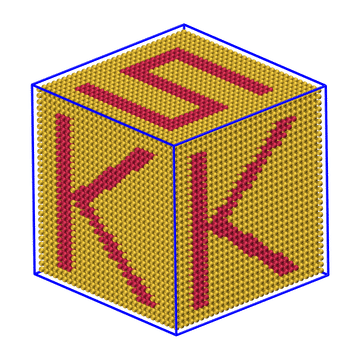Summary
- Eight years of Research Experience in Soft Matter Molecular Modelling
- Techniques: Atomistic and Coarse-grained Molecular Dynamics (MD) Simulation, Density Functional Theory (DFT), Free Energy Methods, Applied Mathematics
- Application Areas: Soft Matter including Polymers, Thermosets, Composite Interfaces, Surfactants, Peptides, Ions
- Programming/Software: C++, Python, LAMMPS, VMD, Gaussian, MATLAB, Igor Pro, Unix-based HPC tools
Education
- Ph.D. Chemical Engineering, Texas Tech University, Aug 2007–Dec 2013, Doctoral Dissertation: Thermomechanical Properties of Cross-linked Epoxy Based Systems: A Molecular Simulation Study (Free link)
- Bachelor of Chemical Engineering (1st Class), Institute of Chemical Technology Mumbai, India (formerly UDCT, Bombay) Oct 2007–May 2013
Appointments
- Postdoctoral Researcher, Chemical and Biological Engineering, Drexel University, Philadelphia, PA, Jun 2020 – Current
- PREP-MML Postdoctoral Fellow, Material Measurement Laboratory, US National Institute of Standards and Technology, Gaithersburg, MD, Sep 2015–Oct 2019 (Joint with Georgetown U)
- PREP-MML Postdoctoral Fellow, Physics, Georgetown University, Washington, DC, Sep 2015–Oct 2019
- Postdoctoral Fellow, Chemical and Biological Engineering, Rensselaer Polytechnic Institute, Troy, NY, US, Feb 2014–Aug 2015
- Research and Teaching Assistant, Texas Tech University, Lubbock, TX, US, Aug 2007–Dec 2013
Peer-Reviewed Publications
- Khare, K. S.; Abrams, C. F. Atomistic Simulation of Volumetric Properties of Epoxy Networks: Effect of Monomer Length. Soft Matter, 2021, 43, 9957-9966.
- Khare, K. S.; Phelan, F. R., Jr. Integration of Atomistic Simulations with Experiments using Time−Temperature Superposition for a Cross-linked Epoxy Network. Macromol.Theory Simul. 2020, 29, 1900032. (DOI)
- Khare, K. S.; Phelan, F. R., Jr. Quantitative Comparison of Atomistic Simulations with Experiment for a Cross-Linked Epoxy: A Specific Volume – Cooling-Rate Analysis. Macromolecules 2018, 51, 564–575. (Free link)
- Sirk, T. W.; Karim, M.; Khare, K. S.; Lenhart, J. L.; Andzelm, J. W.; Khare, R. Bi-modal Polymer Networks: Thermal and Volumetric Properties from Molecular Dynamics Simulations. Polymer 2015, 58, 199–208. (DOI)
- Khare, K. S.; Khabaz, F.; Khare, R. Effect of Carbon Nanotube Functionalization on the Glass Transition in Cross-Linked Epoxy–Carbon Nanotube Nanocomposites: Role of Strengthening the Interfacial Interactions. ACS Appl. Mater. Interfaces 2014, 6, 6098–6110. (Free link)
- Sirk, T. W.;* Khare, K. S.;* Karim, M.; Lenhart, J. L.; Andzelm, J. W.; McKenna, G. B.; Khare R. High Strain Rate Mechanical Properties of a Cross-linked Epoxy across the Glass Transition. Polymer 2013, 54, 7048–7057. (DOI) *Equally contributing author
- Khare, K. S.; Khare, R.; Effect of Carbon Nanotube Dispersion on Glass Transition in Crosslinked Epoxy – Carbon Nanotube Nanocomposites: Role of Interfacial Interactions. J. Phys. Chem. B 2013, 117, 7444–7454. (Free link)
- Khare, K. S.; Khare, R. Directed Diffusion Approach for Preparing Atomistic Models of Crosslinked Epoxy for use in Molecular Simulations. Theory Simul. 2012, 21, 322–327. (DOI)
